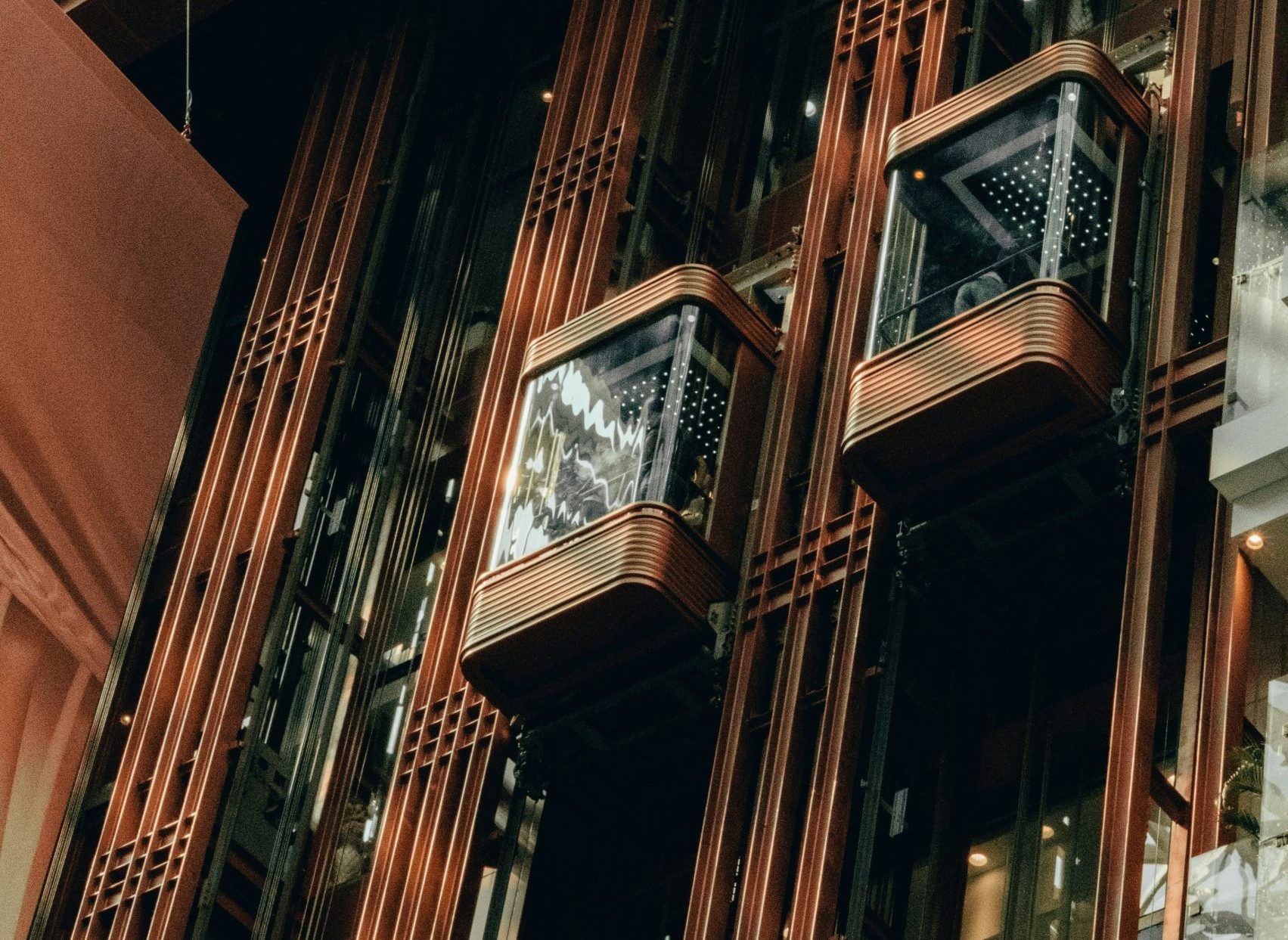The Evolution of Elevator Technology:The Rise of Destination-Oriented Elevator Systems (a.k.a Destination Dispatch Systems).
Elevator technology has transformed dramatically over the years, evolving from manually operated lifts to today’s intelligent, AI-driven transportation systems. One of the most groundbreaking innovations in this field is the Destination Dispatch System (DDS), a technology that optimizes elevator efficiency, reduces wait times, and enhances user experience.
A Brief History of Elevator Control Systems
The earliest elevators were manually operated by lift attendants, who controlled the speed and stopping points. With the rise of electrical push-button controls, elevator operation became automated, allowing for precise floor selection and improved efficiency.
By the mid-20th century, group automatic operation was introduced, allowing elevators to communicate and optimize travel routes. However, traditional dispatching still followed a simple rule: answering calls in the order they were received. This method, while effective, struggled in high-rise buildings with heavy traffic.
The introduction of microprocessors in the late 20th century paved the way for intelligent dispatching algorithms, leading to the birth of Destination Dispatch Systems in the 1990s.
How Destination Dispatch Works
Unlike traditional elevator systems, where passengers press an “up” or “down” hall call button and then select their floor inside the car, DDS requires passengers to enter their destination before boarding. The system then assigns them to a specific elevator that will take them to their floor with minimal stops.
DDS achieves this using advanced algorithms, sensors, and AI-driven analytics. Advanced interfaces include touchscreen kiosks, keypads, and smartphone apps. Some systems even integrate with building access controls, ensuring secure and efficient vertical transportation.
Key Advantages of Destination Dispatch Systems
Optimized Traffic Flow
DDS groups passengers traveling to similar floors, reducing unnecessary stops and improving efficiency. By reducing crowding and optimizing car assignments, DDS enhances a building’s overall vertical transportation capacity. This happens because:
- Reduced Crowding at Elevator Lobbies: DDS pre-assigns passengers to specific elevators, distributing them evenly and reducing congestion.
- Fewer Stops, Faster Trips: Grouping passengers by destination results in fewer intermediate stops, allowing elevators to move efficiently.
- Better Traffic Management: DDS strategically assigns calls, avoiding bottlenecks and unnecessary trips.
- Maximized Use of Available Elevators: Elevators are balanced in workload, preventing underuse or overuse of specific cars.
- Higher Passenger Throughput: More people are transported per hour due to optimized routing and load balancing.
Increased Capacity Handling
By reducing crowding and optimizing car assignments, DDS enhances a building’s overall vertical transportation capacity.
Reduced Energy Consumption
While it may seem counterintuitive that DDS reduces energy consumption despite engaging more elevators simultaneously, the key lies in efficiency:
- Fewer Stops = Less Energy Waste: Every stop requires acceleration and deceleration, which consume energy. DDS minimizes these unnecessary stops.
- Optimized Traffic Flow = Less Idle Time: Elevators are used more efficiently, reducing downtime and unnecessary power use.
- Better Load Distribution = Reduced Peak Demand: DDS spreads passenger loads across multiple elevators, preventing sudden energy spikes.
- Integration with Regenerative Drive Systems: Many DDS-equipped elevators use regenerative drives to capture and reuse braking energy, further optimizing power use.
Enhanced Security and Customization
Integrated access controls ensure that only authorized personnel can reach restricted floors.
Seamless User Experience
Shorter wait times, less congestion, and smoother rides improve the overall passenger experience.
Best-Suited Applications for Destination Dispatch
High-Rise Office Buildings
Skyscrapers with predictable traffic patterns greatly benefit from DDS, especially during peak hours.
Luxury Hotels
DDS enhances the guest experience by providing efficient, seamless movement between rooms, lobbies, and amenities.
Hospitals and Healthcare Facilities
Hospitals can prioritize emergency staff and patient transport while efficiently handling general traffic.
Mixed-Use Developments
Buildings combining residential, commercial, and office spaces benefit from DDS by segregating traffic flows for different user groups.
Airports and Transit Hubs
High-volume transportation centers rely on DDS to manage surges in passenger movement efficiently.
The Future of Destination Dispatch Technology
With the rapid advancement of AI and IoT, DDS is poised to become even more intelligent. Future developments include:
- AI-Powered Traffic Prediction: Smart algorithms that anticipate peak usage times and dynamically adjust operations.
- Voice and Gesture Controls: Hands-free interactions for a seamless passenger experience.
- Personalized Mobility Solutions: Elevators that recognize users and automatically select their pre-set destination.
Conclusion
Destination Dispatch Systems represent a major leap forward in elevator technology, redefining efficiency, capacity, and passenger comfort. While implementation comes with challenges, the long-term benefits make DDS a compelling choice for modern buildings looking to optimize vertical transportation.
As technology continues to evolve, DDS will become an even more integral part of intelligent building design, enhancing both functionality and the overall urban experience. If you are considering an upgrade, engaging with an experienced consultant can help tailor a solution that best fits your building’s needs.



